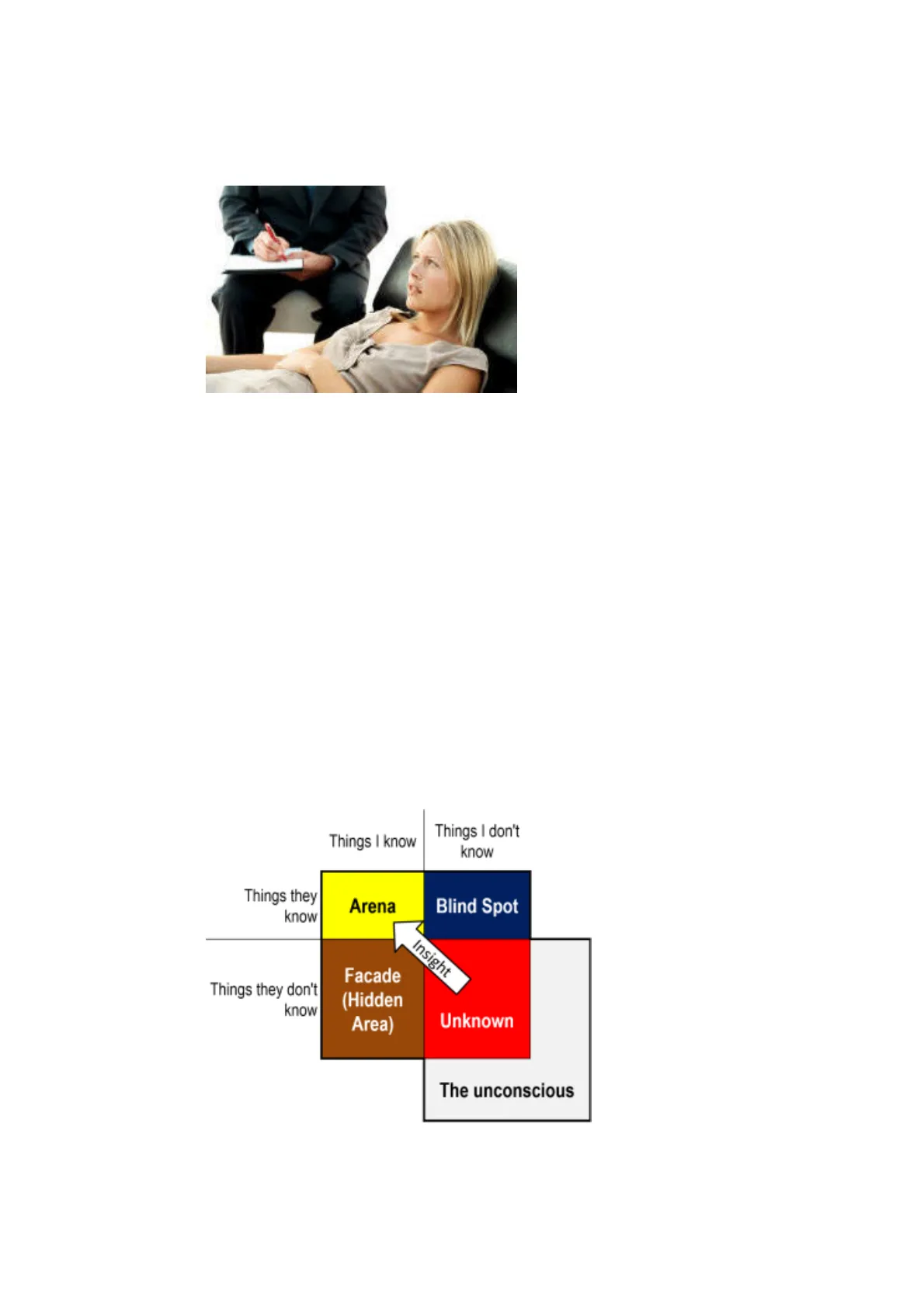ELT Concourse teacher training: needs analyses and Johari window
Document from Elt Concourse about ELT Concourse teacher training. The Pdf explores needs analyses in English teacher training, discussing methods, advantages, and disadvantages of data collection techniques, including the Johari window model. This material is useful for vocational education in languages.
See more8 Pages


Unlock the full PDF for free
Sign up to get full access to the document and start transforming it with AI.
Preview
ELT Concourse Teacher Training
Conducting Needs Analyses
Needs analyses depend on our learners already knowing, or our ability to discover, their needs for English language training.
There a number of ways of going about conducting a needs analysis but before we look at them, let's get the trees out of the way of the wood. Which of the following do you think are true? Click here when you have an answer.
Needs analysis:
- is different from testing
- always includes some form of diagnostic testing
- should include some form of assessment of learning style
- refers to people's need for the language only
- can be conducted without consulting the learner(s)
- is a straightforward process involving canvassing our students' views
- must always be done before a course is planned
Comments on Needs Analysis Statements
- Yes. Needs analyses may include some form of testing but it is not the same thing as testing.
- No. Some analyses don't have to have a test involved in them. For example, if you are constructing a course for very elementary learners, a diagnostic test may not provide any useful data.
- Maybe. See the criticisms of learning-style theories for more. Some do, some don't.
- No. People's needs for and wishes concerning particular materials, groupings and procedures may also be considered.
- Yes, oddly. There are numerous occasions when the learners' employers, schools, sponsors etc. know what the needs are for their clients.
- No. This is a complicated area because we are relying quite heavily on introspection.
- Should, perhaps, but in the real world it's not always possible. If a course is well described, learners are often able to self-select, depending on their own perceptions of what they need without any needs analysis.
A Little Psychology in Needs Analysis
The usual way of conducting a needs analysis is some form of questioning. However, even simple questions such as What area of English is most important to you? are not as simple and may not be as useful as they look.
Think for a moment about why this might be the case and then click here for some commentary.
- The question requires a level of introspection which not all learners have.
- The respondent needs some meta-language (such as study skills, reading skills, tense structures, functions, notions etc.) to produce a helpful response.
- The respondents may actually write down what they think are important skills that they have heard about rather than what is important to them.
- Respondents may not know what is important to them.
- Respondents may give the answer they think the questioner wants.
The Johari Window Model
The Johari window was invented over 60 years ago by Joseph Luft and Harrington Ingham (hence its name). It was originally designed to help people try to understand themselves and it looks a bit like this:
Things I know Things I don't know Things they know Arena Blind Spot Things they don't know Insight Facade (Hidden Area) Unknown The unconscious
The four central areas are described by the 'Things ... ' sentences surrounding them. For example, the Facade is the area of things that I know about myself but keep hidden from others. The Blind Spot refers to things that others see in me which I know nothing about. Insight is our ability to draw on our unconscious understanding to realise something about ourselves.
Originally, the technique was used for people to select 6 adjectives to describe themselves and then their peers were asked to select 6 which described the subject. Putting these adjectives into the grid, it is claimed, helps people to see themselves as others see them and be better able to use insight and introspection.
For our purposes here it stands as a reminder that however carefully a questionnaire or interview process is designed, it ultimately depends on people knowing about themselves and, as the window demonstrates, few of us really do.
Conducting a Needs Analysis: Self-Reflection
Before we start a needs analysis we need to do one on ourselves:
- What do we want to know?
- How are we going to discover it?
What to Know in Needs Analysis
There is a wide range of things that we might want to know, of course. Among them are:
setting in what settings (work, school, university, social encounters, with native speakers, dealing with officialdom etc.) does the subject need to use English?
skills do the learners need to deploy all four skills or are some of them more important than others?
sub-skills of the important ones, are there particular subskills (such as writing e-mails, giving oral presentations etc.) that the learners need?
accuracy levels is it important that the learners focus on producing accurate language or is basic communicative competence the aim?
functions are there specific functions (such as asking for permission, inviting, offering, declining etc.) which are particularly important in the setting described?
notions are there particular notions (such as arrangement of objects, degree, motion etc.) which the learners need to be able to handle successfully?
registers are there particular registers (academia, engineering, the military, air transport, tourism etc.) in which the learners will have to use English and will need the lexical and structural means to do so?
learning styles are there particularly common learning styles in the group? See the guide to learning styles for ways of gathering these data. If you do gather this information, what are you going to do with it and do you trust it?
You may have thought of others. Too often, as soon as we start to construct a needs analysis, what we need to know becomes clear. It should, of course, be clear before we start.
Clearly, the nature of the course will determine what data we want to gather. It may be quite narrowly focused if, e.g. we are dealing with an ESP (English for Special Purposes) course such as one targeted at a particular register and set of skills, or an EAP (English for Academic Purposes) in which we also know the register and the skills people need (essay writing, seminar presentations etc.).
If, on the other hand, we are planning a General English course (sometimes called ENAP, English for No Apparent Purpose), we may need to gather much wider data concerning the learners' views of their own strengths, weaknesses and needs.
How to Conduct Needs Analysis
There are really only two main ways:
- On paper: questionnaires, written prose responses from learners and so on.
- Face-to-face: interviews, focus groups, discussions etc.
Both of these have pros and cons:
In writing Face-to-face For Against For Against can be cheaply administered at a distance is impersonal and often not monitored is personal and can be carefully monitored may be expensive in terms of time and travel is fixed and reliable: everyone answers the same questions is inflexible: later questions can't be premised on earlier responses is flexible and can be altered to suit responses received becomes unreliable with too much alteration can be carefully constructed and designed errors in the questions cannot be eradicated can be altered easily if a question is flawed relies on a subjective judgement of what is said results can be carefully, statistically analysed little data concerning strength of respondents' feelings judgement about strength of feelings can be made it is difficult reliably to collate and analyse results
It is possible in some circumstances to use both approaches and that can avoid the disadvantages of either.
Constructing Questionnaires
Whichever approach is used (and the most common is a written questionnaire) the same considerations apply to how questions are constructed. On this depends absolutely the quality of the data we can gather.
There are a number of key considerations.
- Can you involve the whole group or do you need to select a sample to represent it? If so, how will you ensure they really are representative?
- How are you going to keep records? (This is especially important for face-to-face encounters.)
- Are you asking only the questions you need to ask? Don't muddy the data and irritate people by asking questions which have no bearing on the planning. If you can't or don't want to do anything with the answers, don't ask the questions.
- Are respondents likely to interpret your questions unpredictably? Are they unambiguous?
- Are your questions comprehensible, given the levels of the learners? necessary, can you ask them in the learners' first language(s)?
- Have you thought about how you will analyse the data? If, e.g., the response option is yes/no then you will only know how many or what percent of your sample answered yes/no, not how strongly they felt.
- Are your questions and response choices neutral?
- Have you considered the order and grouping of questions? Previous questions may bias later answers.
- Does each question relate to only one topic? Obviously, if you ask Do you enjoy reading and listening lessons? Yes / No then the results will be useless.
- If you have a multiple response item such as At work / At school / In social settings / With officials etc. (Tick all that apply) have you covered all the possibilities or do you need a hard-to-analyse Other category?
- If the questionnaire is not being administered by you, have you written clear instructions about how it should be administered?
Questionnaire Design
Questionnaires are an indirect method of collecting data; they are substitutes for face-to-face interaction with respondents. (Lee, 2005:760)
A Matrix Questionnaire Example
This is a popular and efficient way of designing a questionnaire. For example Tick one box for each question only.
Not important Fairly important Important Very important Speaking Listening Reading Writing Learning new words
For managers For learners About language Language questions Other areas Academic English Business English
The disadvantage is that all questions have to be phrased in a way that makes the responses appropriate. You can't ask Do you enjoy ...?
Note that this matrix has an even number of response possibilities. That stops people always picking the middle one.
Entering ELT
Courses index Basic ELT course TKT The Bridge Language analysis Training to train Transcription Glossaries
Closed Questions in Questionnaires
There are three sorts:
- Alternate response questions such as: Put a tick by your choice: I enjoy working with a partner: Yes No Homework is helpful: True False
- Multiple-choice items. The matrix above is an example but all the choices are the same. If you want different possibilities for the responses, you need to re-
ELT Concourse home A-Z site index Teacher training index Teacher development For teachers For trainers Grammar Working in pairs